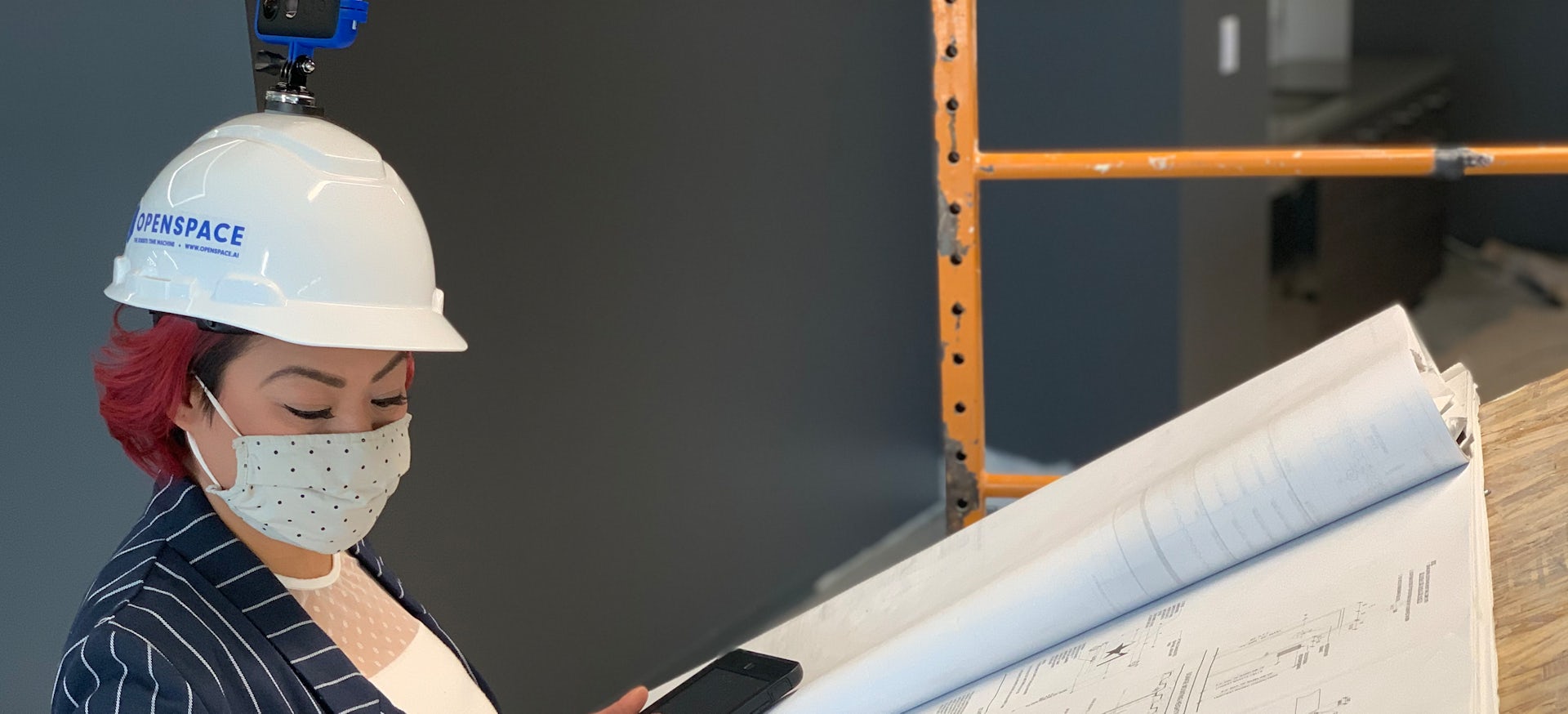With the pandemic limiting onsite visits, LPA is working with a wide variety of digital tools to improve the efficiency and effectiveness of construction site tours.
On one recent project, LPA operations specialist An Ngo toured the construction site of a 12,00 square-foot workplace interiors project with an Insta360 ONE X video camera strapped to a hard hat, which was quickly dubbed “Helmet Cam.” The camera automatically captures 360-degree images, which are compiled into three-dimensional photo renderings in about 15 minutes by a cloud-based platform called OpenSpace Vision Engine.
“Anybody that can operate a game console can use this technology,” Ngo says. “But applying this to the construction site produces real benefits.”
The 3-D images allow stakeholders to virtually walk the job site, viewing everything from the ceiling to the floor, including small details such as electrical outlets or decorative elements, from multiple angles. Design plans can be superimposed over the photo rendering, allowing viewers to assess how real-world progress compares to the design vision. The OpenSpace rendering updates daily, allowing LPA designers, clients and team members to monitor construction in near real time and quickly identify potential errors.
Most of the technology is not new, but the pandemic has pushed LPA designers to find ways to improve the system and ensure proper review, according to Nick Arambarri, LPA’s Director of Commercial. As an integrated firm, with engineers, landscape architects and interior designers working together, LPA is always looking for ways to increase efficiency and collaboration in the process.
‘Helmet Cam’ Improves Project Site Visits

“The technology gives everybody a greater awareness of what others are doing,” Arambarri says. “And the ability to discover an error or gain an understanding of the context for questions that arise in the field without driving through traffic to the project every day is an enormous time-saver.”
The technology is also a valuable tool for staff mentorship. Designers in any one of LPA’s eight practices or six studios in California and Texas can tour a project and learn from the experiences of their colleagues. “This fits with our culture of continuous education,” Arambarri says.
While the technology doesn’t replace in-person site visits, it can produce a wide variety of benefits, Arambarri says. The ability to identify problems early in the process can speed change requests and reduce costs. The renderings also become a resource for future projects. For example, structural engineers and HVAC specialists can virtually revisit progress on past projects to inform their work.
Designers can also instantly view elements of a building from different perspectives. For example, one could examine a fourth-floor picture window from the interior, and then with a click, see how it appears from outside at ground level.
The increasing use of the virtual tour technology is influencing all levels of the process, designers say. Clients can tour projects from anywhere in the world, and experts can be consulted from anywhere. OpenSpace renderings more fully convey the scale of the site and how the finished product would look from different perspectives than one could glean from standard renderings and design plans, Arambarri says.
While the coronavirus made OpenSpace a more valuable tool, LPA plans to continue using it after businesses fully reopen. “It’s definitely not just for the pandemic,” Arambarri says.














